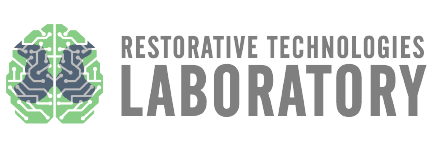Can artificial connections from the brain to muscles restore movement to paralyzed limbs after stroke or spinal cord injury?
We are developing a treatment for paralysis whereby neural signals recorded from intact areas of the cortex are routed around an injury via an electronic device. This device can then send stimulation directly to nerves, muscles or the spinal cord below the injury in order to restore volitional control of movement.
We have thus far demonstrated that even neurons unrelated to movement can be used to control stimulation of muscles, and restore simple movements to an otherwise paralyzed wrist. This finding dramatically expands the potential control signals available for brain-computer interfaces and neuroprosthetic approaches.
Image by Katie Ris-Vicari. From News & Views by S. Scott, Nat. Neurosci 11, 1245-1246 (2008)

